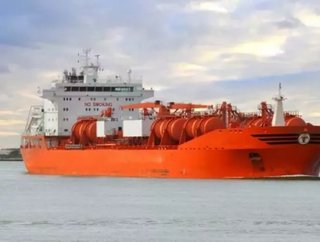Shipping emissions are making the ocean more acidic

Shipping pollution along major trade lanes can rival carbon emissions in contributing to the increased acidity of the ocean, according to a new study by an international team of researchers from the University of Gothenburg, Chalmers University of Technology, the University of Delaware and the Institute for Advanced Sustainability Studies.
The research is the first global analysis that shows that during the summer months acidification from shipping can equal that from carbon dioxide.
Rising levels of carbon dioxide in the atmosphere cause a steady acidification of the ocean as carbon dioxide dissolves into the water and produces the weak acid carbonic acid. Other gases can also cause acidification, for example sulfur and nitrogen oxides, which dissolve to give the strong acids sulfuric acid and nitric acid respectively.
“These oxides are present in the exhaust gases from ships’ engines,” said David R. Turner of the University of Gothenburg in Sweden. “Sulfur oxides come from the sulfur present in marine fuel oil, while nitrogen oxides are formed from atmospheric nitrogen during combustion. Emission of these oxides causes atmospheric pollution, followed by marine pollution (acidification) on deposition.”
Ocean acidification has been shown to harm the health of coral, squid, mussels and other sea life.
“Global shipping has emitted acidifying compounds for decades without emissions controls,” added James J. Corbett, professor of marine policy in the University of Delaware’s College of Earth, Ocean, and Environment. “Only recently have regulatory standards set limits on ship emissions that will take effect between now and 2025.”
These oxides contribute to long-range pollutant transport, but significant amounts can be deposited within a few hundred nautical miles of the shipping lanes. This study has assessed the consequences of releases from shipping on a monthly basis during one year.
The results show that the greatest acidification from shipping occurs in the northern hemisphere in coastal areas during the summer. In addition, acidification occurs in open-ocean regions surrounding heavily trafficked shipping lanes.
Coastal areas are most affected, and regulatory action may reduce impacts
In regional ocean “hot spots,” especially near the coastlines, this seasonal acidification is of the same order as the annual acidification due to carbon dioxide. The globally averaged acidification, in line with previous studies, is much smaller but ignores the important regional acidification caused by ships without emissions control.
“Controls on the sulfur content of marine fuel oil are already in place in North Atlantic ‘hot spot’ areas on the North American and European coasts,” Corbett said. “In 2015 the maximum sulfur content in some of these areas will be reduced from 1 percent to 0.1 percent, while the global maximum will drop more than 80 percent from current average 2.7 percent to 0.5 percent.”
Ship acidifying emissions also impact North American coastal oceans. Previous analyses (see Figure 3.3-17) showed that annual total sulfur deposition attributable to international shipping ranges from 10 percent to more than 25 percent of total sulfur deposition along the entire Atlantic, Gulf of Mexico and Pacific coastal areas.
These studies led the International Maritime Organization to designate Emissions Control Areas around much of North America, following similar control areas in Northern Europe.
“This policy-driven transition to cleaner ship fuels and lower emissions is the most dramatic global reduction in acidifying deposition to the sea since at least the 1950s,” Corbett said.
“This global analysis expands our understanding that controlling ship emissions can be an important step to reduce the acidification of ocean and coastal areas not yet protected by control areas,” Turner said. “Improving the quality of fuels will help, and technologies that scrub the stack gases may need to neutralize the acidic discharges from treatment processes to protect ocean and coastal ecosystems.”
“Emerging policies and practices to improve fuel quality and reduce ship acidifying emissions by 2020 or 2025 provide scientists with a rare opportunity to observe positive change as ships become less polluting,” Corbett said.






